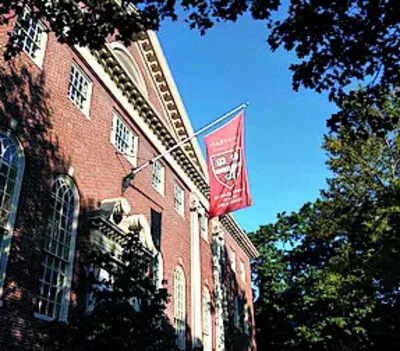What is the statue of lies at Harvard? Here’s what students hardly know about

Nestled in the storied Harvard Yard, amid the hurried footsteps of students and the camera clicks of tourists, stands a bronze figure that has quietly witnessed centuries of ambition, anxiety, and aspiration. A worn toe gleams under countless rubs—a talisman for students hoping to ace their next grueling exam. But beneath the charm and ritual lies a curious secret: this statue tells not one, but three lies.Known affectionately (or controversially) as the “Statue of Three Lies,” the figure, ostensibly John Harvard, conceals more history in its bronze than it reveals. And for every student who passes it, knowing the truth is essential.
Lie one: That isn’t John Harvard
Despite the inscription, the man immortalized in bronze is not John Harvard. Nobody knows his true likeness. When Daniel Chester French sculpted the statue in 1884, he borrowed the face of Sherman Hoar, a young lawyer who would later become a Congressman. In essence, the statue is less a portrait of a man than a symbol of scholarly aspiration.
Lie two: He wasn’t the founder
The pedestal boldly claims Harvard as the “founder” of Harvard University. The reality? John Harvard was its first major benefactor, not its founder. He donated half his estate and a library of over 400 books after his death in 1638. The university itself was officially founded two years earlier, in 1636, by the Great and General Court of the Massachusetts Bay Colony, originally as the “New College” for training clergy. Harvard’s contribution was transformative, but it was a gift, not a founding act.
Lie three: Harvard wasn’t founded in 1638
Close, but not quite. The official founding date is 1636, granting Harvard the distinction of being the oldest institution of higher education in the United States. The university would receive its famous name in 1639, honoring its remarkable benefactor, whose likeness would later be immortalized in this sculpture of “lies.”Every student who pauses to touch the shiny toe or snap a picture with the statue is, in fact, engaging with a living myth, a symbol steeped in legend, rather than strict historical truth. It reminds us that history is rarely tidy and that stories often grow taller in the telling.So next time you walk through Harvard Yard, remember: You’re not just rubbing a toe for luck, you’re connecting with a story, a myth, and three enduring lies that every Harvard student, past and present, should know.






